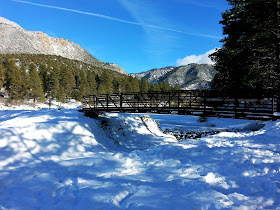I've recently been contemplating how important it is to share our talents, hobbies, and enjoyment of active lifestyles onto the youth in our lives.
With today being all things tech, the way children grow up has changed significantly. With technology there are lots of great things that some of us never had growing up, that will come second nature to kids today. But those things, if not careful can take up too much time and some can miss out the amazing fun actives we cherished in our own lives.
Just like we may look to these younger generations to bring us into the next best and brightest in the technology front, they will need us to show them and teach them to put down the screen and appreciate an active lifestyle and the opportunities that spending time in the outdoors can bring.
As I spend time with my nieces and nephews, as much as I love taking the time to play video games with them, and let them show me the coolest YouTube video they found. I also find myself enjoying it more when I show them the things I loved to do growing up and still do. Funny thing about that, they enjoy their time with me more in the outdoors than when we are in front of a screen. Whether that is taking them hiking, fishing, teaching them to love the outdoors as much as I do, or just playing tag or other similar backyard games with them, there are so many ways I have enjoyed showing them my lives loves.
Why am I this way, why do I love and feel the need to share? Possibly, because of my incredible parents who when I was younger, would take me out on a bike and let me tag along while they got their long runs in. They’d take me and my siblings out hiking to explore as many canyons and trails as possible. We spent more time being active as a family than anything else. To this day, those are the memories I cherish and remember the most above all others!
What I have noticed is when kids are active with you they talk more, share more and tell more about their lives. I learn more about them while I am taking them out hiking for a few hours than I do playing hours of video games.
Not only that, but I am earning their respect and trust and helping build an active foundation in their lives. At the same time sharing this time with them is also a bonus for me, I am able to have more people to take with me to do the things I love too. Who knows but these shared experiences and fun active times, might be the same things they choose to pass onto their own future generations too!
So if you don't already, I challenge others who have children, nieces and nephews or kids around them. To remember the fun times you had growing up, and do all you can to bring those same opportunities and shared experiences into the generations around you. It may be hard to pull them away from the screen, but when you do, they'll probably love you even more for it. Regardless, it's worth it!
Not only that, but I am earning their respect and trust and helping build an active foundation in their lives. At the same time sharing this time with them is also a bonus for me, I am able to have more people to take with me to do the things I love too. Who knows but these shared experiences and fun active times, might be the same things they choose to pass onto their own future generations too!
So if you don't already, I challenge others who have children, nieces and nephews or kids around them. To remember the fun times you had growing up, and do all you can to bring those same opportunities and shared experiences into the generations around you. It may be hard to pull them away from the screen, but when you do, they'll probably love you even more for it. Regardless, it's worth it!
















